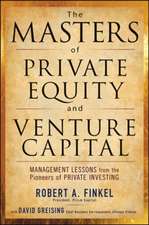Reactive Intermediates: Volume 1
Autor R. A. Abramovitchen Limba Engleză Paperback – 23 noi 2011
| Toate formatele și edițiile | Preț | Express |
|---|---|---|
| Paperback (3) | 400.65 lei 6-8 săpt. | |
| Springer Us – 23 noi 2011 | 400.65 lei 6-8 săpt. | |
| Springer Us – 14 oct 2011 | 406.63 lei 6-8 săpt. | |
| Springer Us – 27 dec 2011 | 406.63 lei 6-8 săpt. |
Preț: 400.65 lei
Nou
Puncte Express: 601
Preț estimativ în valută:
76.69€ • 83.33$ • 64.46£
76.69€ • 83.33$ • 64.46£
Carte tipărită la comandă
Livrare economică 21 aprilie-05 mai
Preluare comenzi: 021 569.72.76
Specificații
ISBN-13: 9781461329756
ISBN-10: 1461329752
Pagini: 540
Ilustrații: 536 p. 3 illus.
Dimensiuni: 152 x 229 x 28 mm
Greutate: 0.71 kg
Ediția:1980
Editura: Springer Us
Colecția Springer
Locul publicării:New York, NY, United States
ISBN-10: 1461329752
Pagini: 540
Ilustrații: 536 p. 3 illus.
Dimensiuni: 152 x 229 x 28 mm
Greutate: 0.71 kg
Ediția:1980
Editura: Springer Us
Colecția Springer
Locul publicării:New York, NY, United States
Public țintă
ResearchCuprins
1. Current Aspects of the Solution Chemistry of Arylnitrenes.- I. Introduction.- II. Intermodular Reactions.- III. Intramolecular Reactions.- IV. Decomposition in the Presence of Protonic and Lewis Acids.- V. Current and Future Application.- References.- 2. Nitrile Ylides and Nitrenes From 2H-Azirines.- I. Generation of Nitrile Ylides.- II. Features of the Photocycloaddition Reaction of 2H-Azirines.- III. Photochemical Dimerizations of 2H-Azirines.- IV. Intramolecular 1,5-Electrocyclization Reactions of Vinyl Substituted 2H-Azirines.- V. Properties of Nitrile Ylides.- VI. Intramolecular Photocycloaddition Reactions of 2H -Azirines.- VII. Further Reactions of 2H-Azirines.- VIII. Thermal Reactions of2H-Azirines.- References.- 3. Radical Cyclizations by Intramolecular Additions.- I. Introduction.- II. General Presentation: The Early Results.- III. Attempts to Rationalize the Selectivities Observed in the Cyclization of 5-Hexenyl Radicals.- IV. Alkyl Substituted 5-Hexenyl Radicals.- V. Alkenyl Radicals Other than 5-Hexenyl.- VI. Carbon-Centered Alkenyl Radicals Containing Heteroatoms.- VII. Alkenyl Radicals Bearing Stabilizing Groups on the Carbon Radical Center.- VIII. Heteroatom-Centered Radicals.- IX. Intramolecular Addition to Other Carbon-Carbon Bonds.- X. Intramolecular Addition to Polar Multiple Bonds Such as Carbonyl or Cyano.- XI. Synthesis of Bi- and Poly cyclic Compounds. Stereochemical Features of Free Radical Intramolecular Additions.- XII. Free Radical Intramolecular Addition as a Mechanistic Tool and a Kinetic Standard.- XIII. Conclusion.- References.- 4. Reactions of Silicon Atoms and Silylenes.- I. Introduction.- II. Methods of Generation of Silicon Atoms.- III. Reaction Modes of Silicon Atoms.- IV. Modes of Formation of Silylenes.- V. Spectroscopic and Thermodynamic Properties of Silylenes.- VI. Chemical Properties of Silylenes.- References.- 5. Five-Membered Hetarynes.- I. Introduction.- II. Chemistry of Arynes.- III. Five-Membered Hetarynes.- IV. Summary.- References and Notes.- 6. A Survey of Favorskii Rearrangement Mechanisms. Influence of the Nature and Strain of the Skeleton.- I. Introduction.- II. Symmetrical Mechanisms.- III. Unsymmetrical Mechanism.- IV. The Favorskii Rearrangement in Bridged Polycyclic and Cage Compounds.- V. General Conclusion.- References.














